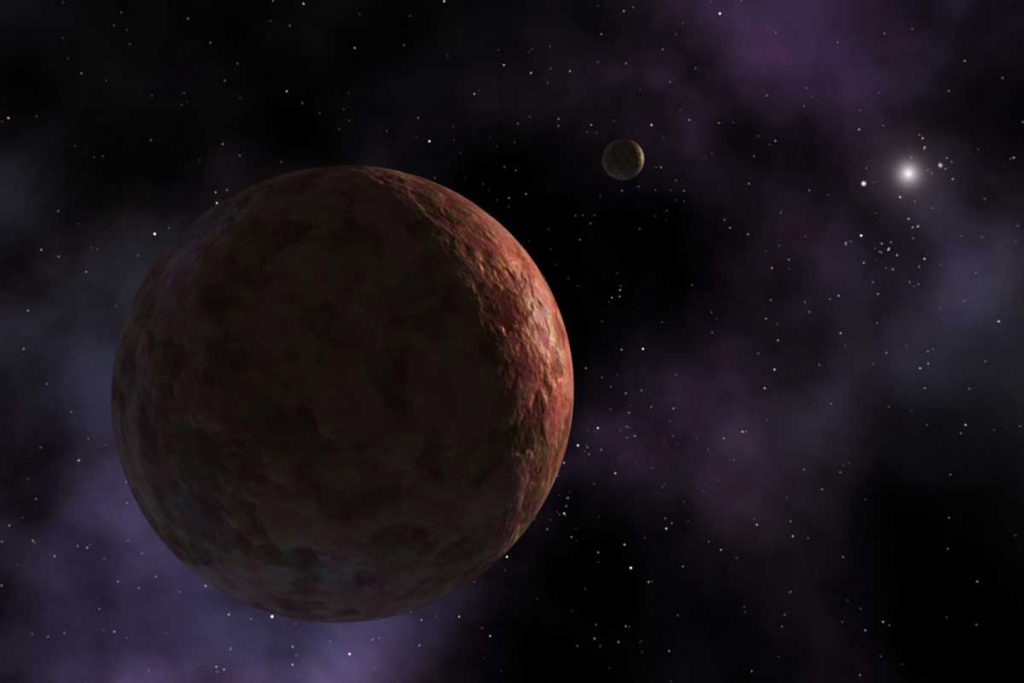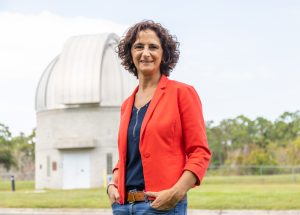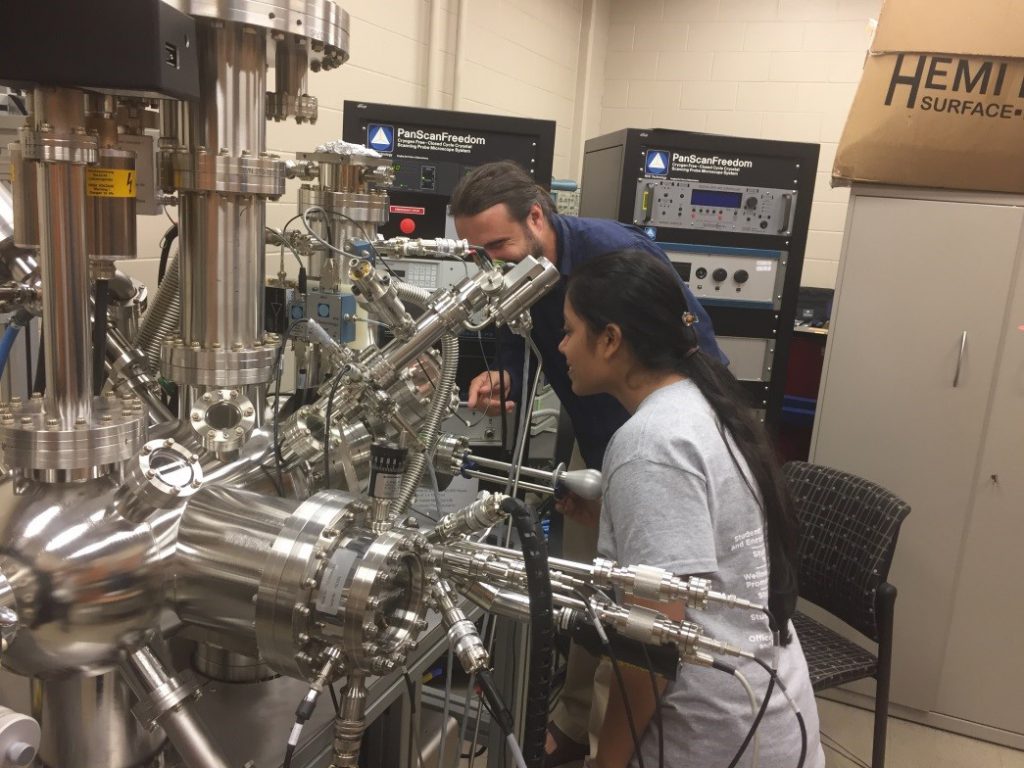BY ZENAIDA GONZALEZ KOTALA | MAY 3, 2021

When the James Webb Space Telescope launches later this year, UCF researcher Noemi Pinilla Alonso will be among a select group of scientists worldwide who will have more than 100 hours of observation time awarded to conduct her work.
The JWST telescope, which has been described as NASA’s next great space telescope, is a hot commodity. More than 1,100 proposals from 44 countries were submitted to the Telescope Allocation Committee late last year. The committee made of up of more than 200 astronomical experts from around the globe conducted complicated reviews over several weeks. A total of 286 proposals were selected. Women are leading 86 of those projects. A total of 6,031 hours of telescope time was approved from more than 24,400 proposed.
The scientists will be using their telescope time to find new galaxies, explore the formation of stars and better understand the physical and chemical properties of planetary systems including our own.
That’s where Pinilla-Alonso, a planetary scientist at the UCF-based Florida Space Institute, comes in. She proposed an ambitious project to study 59 trans-Neptunian objects (TNOs) and centaurs in our solar system. She is also a co-investigator on two other proposals that were also selected.
“It’s pretty exciting,” Pinilla-Alonso says. “We put together a great global team with unique expertise, including senior researchers and post docs, for our TNO proposal. The vast collection of novel data produced by this large program will also provide the opportunity for our Ph.D. students at UCF to be trained in the use of this next generation space telescope from the very start.”

TNOs are crucial because they include some of the most primitive and unprocessed bodies in the solar system and preserve evidence of the how the solar system first formed. The TNOs have been studied with ground-based telescopes for years, but the available technology is at its limits. There is no instrument now or planned for the next 10 years that could significantly increase knowledge of TNOs, except for the JWST, according to the research team.
“This is a unique opportunity to really get a never before available look at TNOs and what secrets they hide,” she says.
The telescope is expected to launch in October 2021, travel one million miles into deep space and begin running diagnostics to make sure everything is working properly. Initial observations are scheduled to being in early 2022.
JWST will provide near to mid-infrared sensitivity and high-resolution imaging and spectroscopic capabilities according to NASA.
The other projects Pinilla-Alonso is part of will use the telescope to observe:
Uranus’ moons Ariel, Umbriel, Titania and Oberon
Pluto and one of its five moons, Charon
The first team led by planetary astronomy researcher Richard Cartwright at the SETI Institute and in collaboration with NASA, the Lowell Observatory and Jet Propulsion Laboratory in California, aims to investigate materials on Uranus moons, which could indicate they once supported oceans. The researchers will look for spectral evidence of ocean activity and will characterize the organic material on their surfaces. The information should give the team information to assess how the moons formed within the Uranian sub nebula, according to the proposal.
The last project led by French astronomer Emmanuel Lellouch from the Observatory of Paris in collaboration with NASA and the Space Telescope Science Institute, looks at Pluto and nearby Charon. The research team will use the telescope to gather data to address questions about Pluto’s climate evolution, the atmosphere’s chemistry and energy balance as well as the thermal and compositional properties of Pluto and Charon’s surfaces, according to the proposal.


